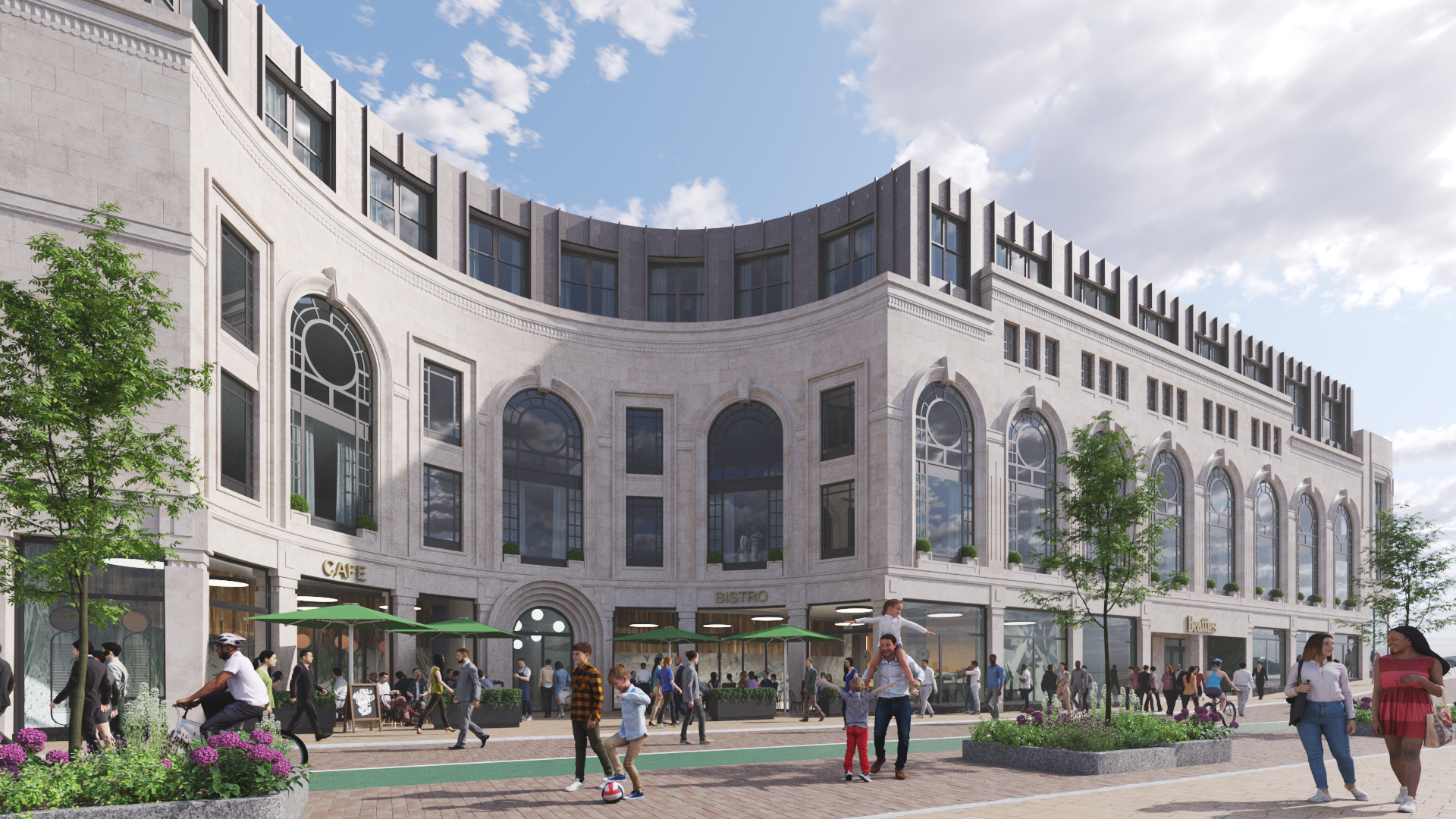'We should be shouting about city's architecture'
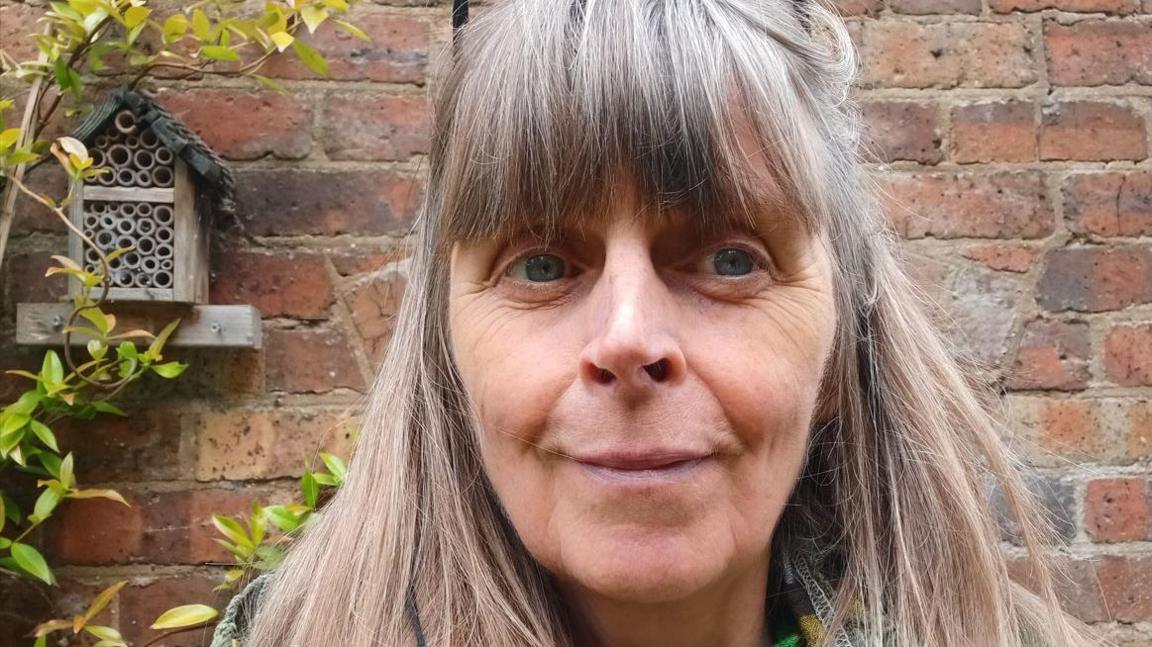
Emma Purshouse said Wolverhampton had a lot of interesting architecture
- Published
A city's historic buildings are undergoing a revival and one local photographer, Ian Hughes, said: "We should be shouting about it from the rooftops."
Talking about Wolverhampton, he admitted he was once "one of the naysayers who felt it was a dump" - but has found a love for the city's architectural history and said: "There's a lot to celebrate in Wolverhampton."
Emma Purshouse, editor of the Black Countryman magazine, also believes the city has some amazing architecture.
She said: "If it was Stratford or the posh parts of London, they'd have been preserved and made part of a tourist trail."

Ian Hughes has been walking around the city taking photos of what he calls its more interesting buildings
Mr Hughes started going on walks around the city two years ago, taking photos of the buildings as he went.
He has more than 10,000 images and said the city was now "definitely a phoenix rising from the ashes".
One recent discovery which stuck in his mind was a large brick building near the canal.
"Nobody seemed to know what it was," he said - but he eventually found it had once been a butter and cheese factory.
Mr Hughes said it was a "lovely building, totally overgrown and desperately in need of repair" and he felt it had an interesting story to tell.

One of Ian Hughes' favourite discoveries was this former cheese and butter factory in Horseley Fields
Mr Hughes said he did not know why Wolverhampton "chose to knock things down" but it was nothing new or unique to the city.
He said the Victorians "just swept everything away" to create the modern city centre and their buildings had in turn been replaced after World War Two.
"In the 1950s, councils up and down the country did exactly the same," he added.
But Mr Hughes is not angry about the city's lost history and said: "People made what they think were the right decisions at the time.
"These buildings were never built to last forever and be part of history, they were built with a purpose and those purposes are long, long gone."
Ms Purshouse said she believed it was "easier to knock things down than preserve them" but there were many examples of interesting architecture still in Wolverhampton.
She said her favourites included the Great Western pub, with its cobbled street "because it feels like you've just stepped back in time into a little Victorian pocket of Wolverhampton" and the Lychgate Tavern off Queen's Square.
While some old buildings were "hidden" behind modern shop fronts, with others it had been "easier to knock things down than preserve them", she added.
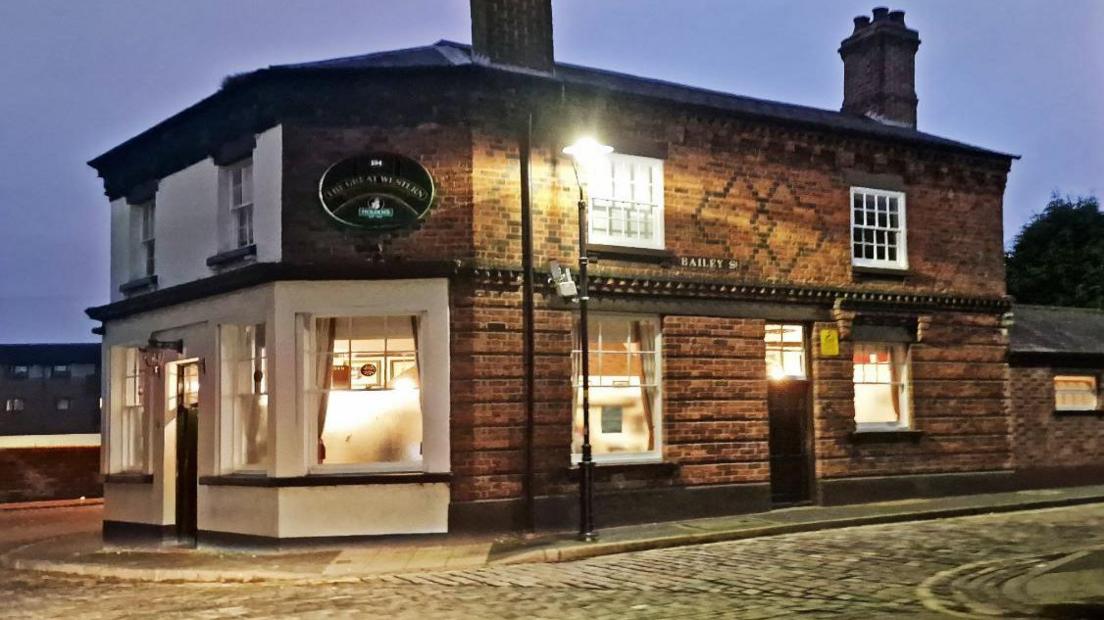
The Great Western pub is one of the historic buildings still in use in Wolverhampton
Ms Purshouse was appointed Wolverhampton's first poet laureate during the coronavirus pandemic and, like Mr Hughes, spent a lot of time walking around the city.
She said while some buildings had been lost, there were also good examples of historic buildings being preserved, such as the Albion Mill.
The former corn mill has been turned into flats but its appearance has been preserved.
She also hoped the city's former eye infirmary would be treated sensitively when the old NHS site was developed.
There is planning consent to turn it into flats, a special needs school and an eating disorder clinic.
The city council said the Victorian building and former nurses accommodation would be restored as part of that work and it was encouraging the owners to move the project forward.
Ms Purshouse said she has happy to see buildings change their use if they can "keep the architecture and keep the feel of the things".
Mr Hughes said there were also encouraging signs for the future of Wolverhampton, with projects such as the planned redevelopment of the former Beatties store.
The site will be turned into a mixture of apartments and shops and the city council said it was in "regular contact" with the owners of this building too, "to offer support and encourage action to move things forward".
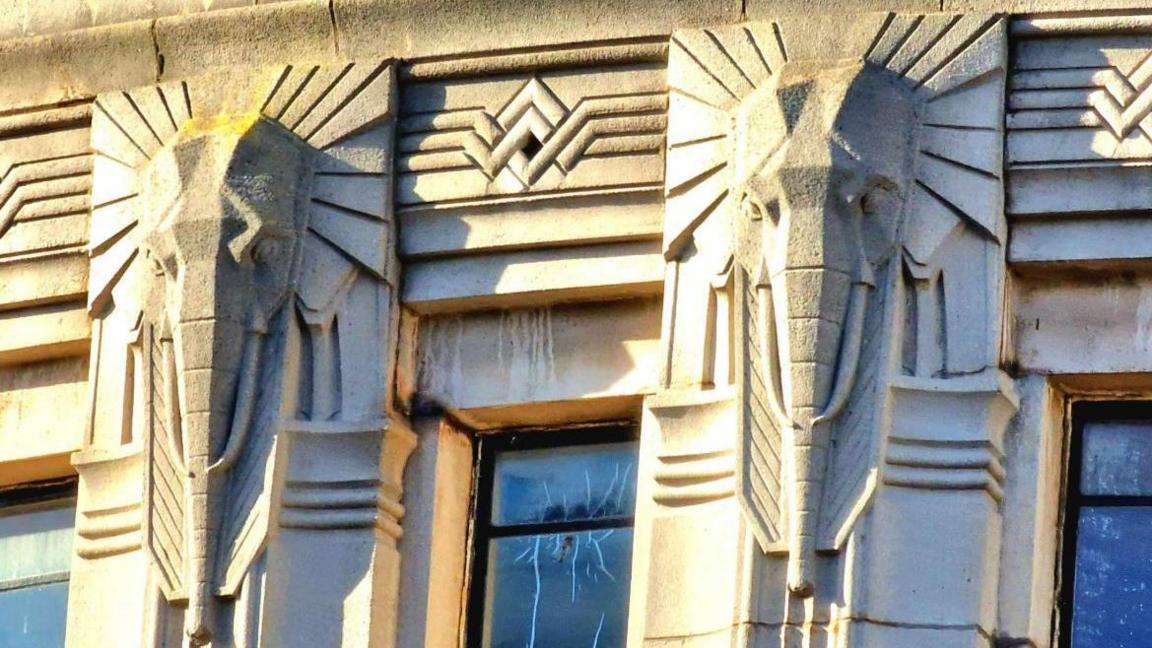
The former Beatties store with its elegant stonework is well-known in the city
The councillor responsible for development in Wolverhampton, Chris Burden, said the city was "full of beautiful architecture" and the council took the preservation and restoration of heritage buildings "extremely seriously".
The authority pointed to a number of other buildings which have been brought back into use.
They include the Grade II listed Civic Hall and Wulfrun Hall, now known simply as The Halls, which were refurbished at a cost of £48m.
The former Royal Hospital, which closed in 1997, has also been brought back into use as flats for people over the age of 55.
Other projects still in the works include turning the former Chubb Locks factory into a four-screen cinema and the restoration of the central library.
The council said it was also working with the owners of the city's other empty buildings to bring them back into use and improve how they look from the outside.
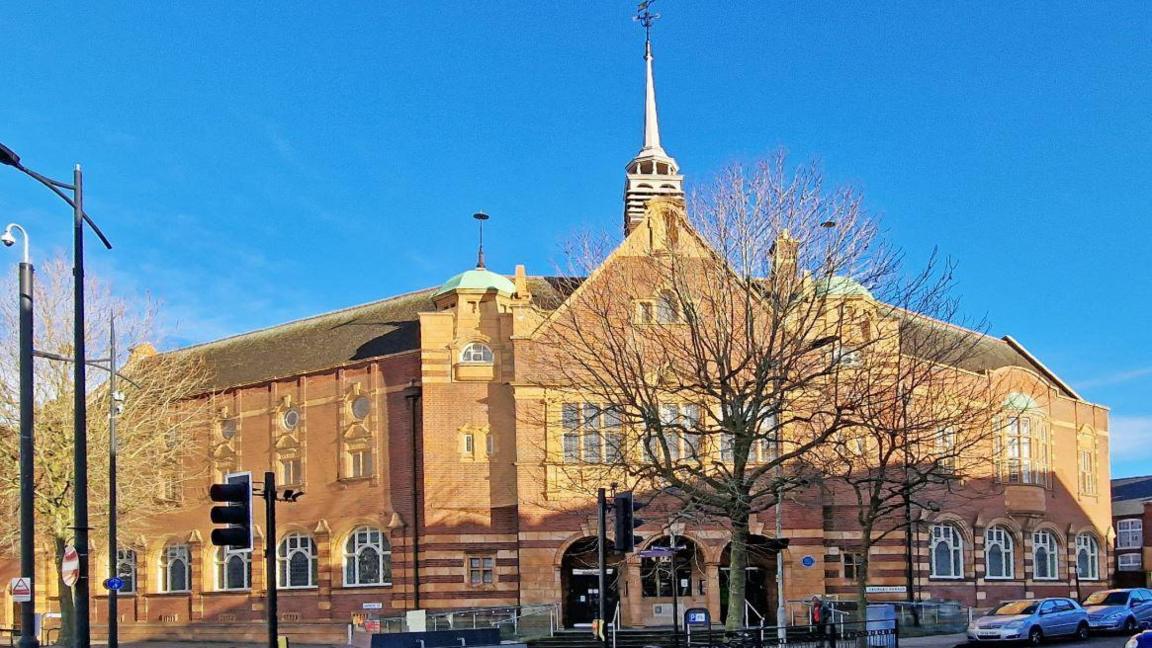
The central library features plaques above the first floor windows bearing the names of Victorian poets and authors
While it might be romantic to think Wolverhampton's forgotten buildings could all be brought back into use, Mr Hughes believes people should be realistic about the future of town centres.
With shopping habits changing, he said: "Towns as we knew them are gone, they're never coming back."
But he said if developers were prepared to put in the money and the effort, the centre of Wolverhampton "could become what it used to be".
Get in touch
Tell us which stories we should cover in Wolverhampton
Follow BBC Wolverhampton & Black Country on BBC Sounds, Facebook, external, X, external and Instagram, external.
Related topics
More stories like this
- Published14 May 2024
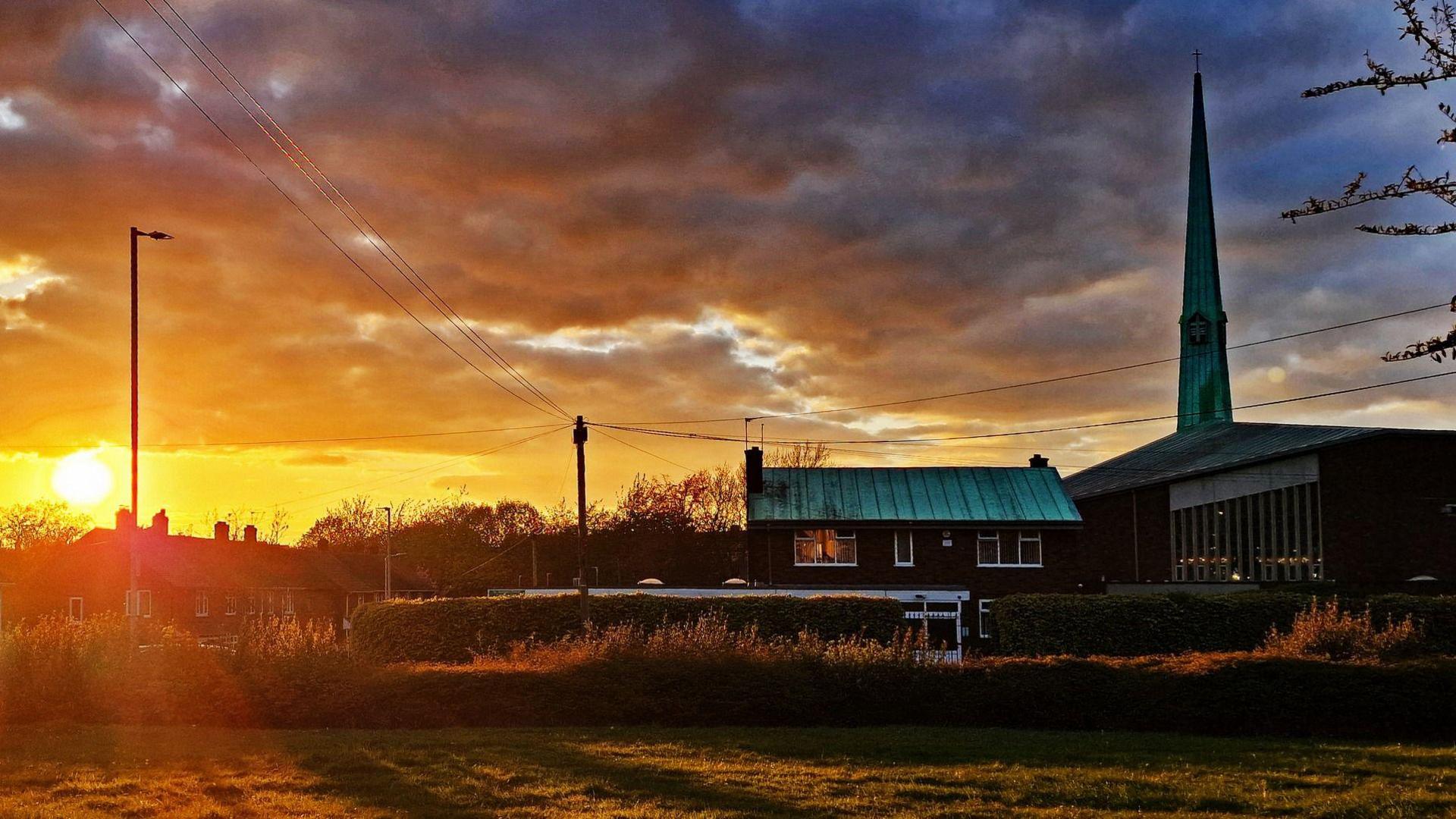
- Published11 March

- Published21 May

- Published10 September 2024
